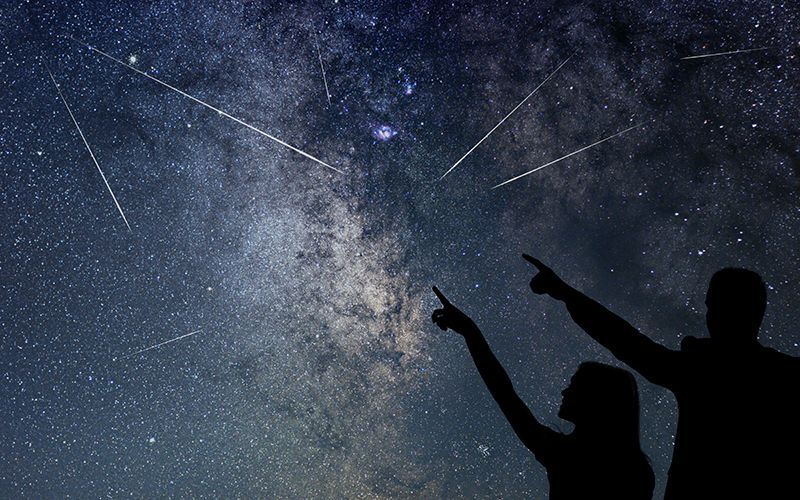Stargazers across the country are in for a treat, with up to 20 times more shooting stars than on a typical night. The Perseids, known for their bright meteors and high frequency, are set to put on a dazzling display that will captivate both amateur astronomers and casual observers alike.
The Perseid meteor shower is an annual event that occurs when Earth passes through the debris left behind by the comet Swift-Tuttle. As these tiny particles, often no larger than a grain of sand, enter the Earth’s atmosphere at high speeds, they burn up, creating the bright streaks of light we call meteors or shooting stars. The shower is named after the constellation Perseus, from which the meteors appear to radiate.
The Perseids are particularly famous for their high frequency and bright meteors, which can sometimes leave persistent trails of light that linger in the sky for several seconds. This year, with clear skies, observers in Ireland could witness up to 100 meteors per hour at the peak of the shower.
Visibility in Ireland
The Perseid meteor shower is visible in Ireland almost every year, typically peaking around mid-August. This year’s event is especially promising due to the phase of the moon. With a new moon occurring just days before the peak, the skies will be dark, providing perfect conditions for meteor watching.
For the best viewing experience, it’s recommended to find a spot away from city lights, where the sky is darkest. Ideal locations might include rural areas, parks, or even the coast. The meteors will be visible across the entire sky, but the best place to look is in the direction of the Perseus constellation, which rises in the northeastern sky around midnight.
Preparing for the Perseids
For those planning to watch the Perseid meteor shower on Monday night, it’s important to prepare appropriately.
Dress warmly, as temperatures can drop during the night. Bring a blanket or a reclining chair to make viewing comfortable, and allow your eyes to adjust to the darkness for about 20 minutes before the peak activity begins.
Patience is key, as the meteors may come in spurts, with quiet periods in between.
As one of the most anticipated celestial events of the year, the Perseid meteor shower is a reminder of the beauty and vastness of our universe. Whether you’re an avid astronomer or simply someone who enjoys the night sky, Monday night’s display promises to be an unforgettable experience. So, find a dark spot, look up, and enjoy the show.
Meteor showers and celestial events in Ireland
Ireland is fortunate to have relatively dark skies in many areas, making it an excellent location for stargazing and observing other celestial events. In addition to the Perseids, several other meteor showers are visible throughout the year:
The Quadrantids (January)
This meteor shower peaks in early January and is known for its bright meteors. Although it has a short peak period, it can produce a high number of meteors in a short time.
The Lyrids (April)
The Lyrid meteor shower is one of the oldest known, with records dating back over 2,500 years. Peaking around April 22nd, it is a reliable and moderately active meteor shower.
The Geminids (December)
The Geminid meteor shower is one of the most active meteor showers of the year, often producing over 100 meteors per hour at its peak around December 13th-14th. The Geminids are known for their bright and multi-colored meteors.
In addition to meteor showers, Ireland’s night skies offer other celestial events:
Aurora Borealis (Northern Lights)
On rare occasions, Ireland’s northern skies light up with the aurora borealis, especially during periods of high solar activity. Counties like Donegal and Mayo have seen these magnificent displays.
Total lunar eclipses
These occur when the Earth comes between the sun and the moon, casting a shadow over the moon. The entire moon can turn a deep red, known as a “blood moon.”
Planetary alignments
At certain times of the year, planets like Venus, Mars, and Jupiter become prominently visible and sometimes align in the night sky, offering another layer of wonder for stargazers.




